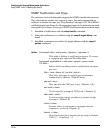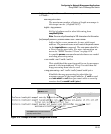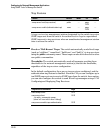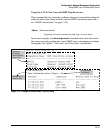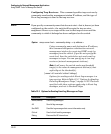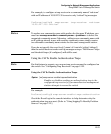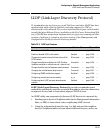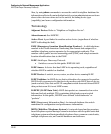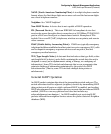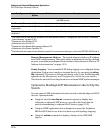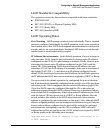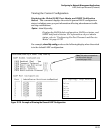
12-26
Configuring for Network Management Applications
LLDP (Link-Layer Discovery Protocol)
Also, by using show commands to access the switch’s neighbor database for
information collected by an individual switch, system administrators can learn
about other devices connected to the switch, including device type
(capability) and some configuration information.
Terminology
Adjacent Device: Refer to “Neighbor or Neighbor Device”.
Advertisement: See LLDPDU.
Active Port: A port linked to another active device (regardless of whether
MSTP is blocking the link).
ELIN (Emergency Location Identification Number): A valid telephone
number in the North American Numbering Plan format and assigned to a
multiline telephone system operator by the appropriate authority. This
number calls a public service answering point (PSAP) and relays automatic
location identification data to the PSAP.
LLDP: Link Layer Discovery Protocol:
• Switches covered in this guide: IEEE 802.1AB
LLDP-Aware: A device that has LLDP in its operating code, regardless of
whether LLDP is enabled or disabled.
LLDP Device: A switch, server, router, or other device running LLDP.
LLDP Neighbor: An LLDP device that is either directly connected to another
LLDP device or connected to that device by another, non-LLDP Layer 2 device
(such as a hub) Note that an 802.1D-compliant switch does not forward LLDP
data packets even if it is not LLDP-aware.
LLDPDU (LLDP Data Unit): LLDP data packet are transmitted on active
links and include multiple TLVs containing global and per-port switch
information. In this guide, LLDPDUs are termed “advertisements” or
“packets”.
MIB (Management Information Base): An internal database the switch
maintains for configuration and performance information.
MLTS (Multiline Telephone System): A network-based and/or premises-
based telephone system having a common interface with the public switched
telephone system and having multiple telephone lines, common control units,
multiple telephone sets, and control hardware and software.



